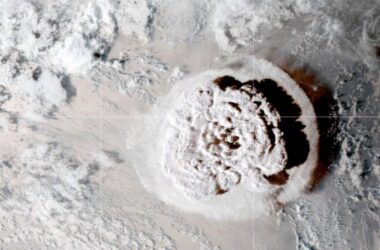
The Mystery of Earth’s Water Origin
Scientists have long wondered about the origin of Earth’s water. Studies of meteorites have revealed their surprising abundance of water, suggesting that water was delivered to our planet by incoming asteroids billions of years ago. However, the composition of water in meteorites does not match that of Earth’s water precisely. The presence of a heavier form of hydrogen called deuterium in the extraterrestrial water indicates the existence of another water source on Earth.
The Solar Wind Connection
Researchers, led by Luke Daly from the University of Glasgow, believe they have found the missing piece of the puzzle. By analyzing a single grain of material returned from the asteroid Itokawa by the Japanese spacecraft Hayabusa, they discovered that the solar wind played a crucial role in producing water on asteroids. The solar wind, consisting mostly of hydrogen ions from the sun, interacts with oxygen atoms in asteroid rocks, resulting in the production of water.
The Birth of Earth’s Oceans
Early in the solar system’s history, abundant dust could have been converted into water by the solar wind. This water, with lower levels of deuterium, may have mixed with the water delivered by asteroids and eventually formed Earth’s oceans. Ashley King from the Natural History Museum in London commends the discovery, stating that it provides concrete evidence of the solar wind’s role in Earth’s water formation.
Atom Probe Tomography: Unveiling the Secrets of Asteroids
To make this groundbreaking discovery, researchers used a technique called atom probe tomography, which involves studying individual atoms from the asteroid. This method could prove useful in future studies of other asteroids, such as Ryugu, and their potential for water production. The Hayabusa 2 mission, set to return samples from Ryugu in 2020, presents an exciting opportunity to further explore this phenomenon.
Implications for Space Exploration
The findings have significant implications for future space exploration. Dust particles on rocky surfaces throughout the universe carry the potential for water production through the interaction with solar wind. This knowledge could be vital for sustaining long-term human habitats on other celestial bodies.
Conclusion
The research suggests that the solar wind played a crucial role in delivering water to Earth and solving the mystery of our planet’s water origin. By studying asteroid materials and employing innovative techniques, scientists have confirmed the existence of water production through solar wind interaction. This discovery expands our understanding of the formation of Earth’s oceans and opens new possibilities for space exploration and habitation.
Topics:








